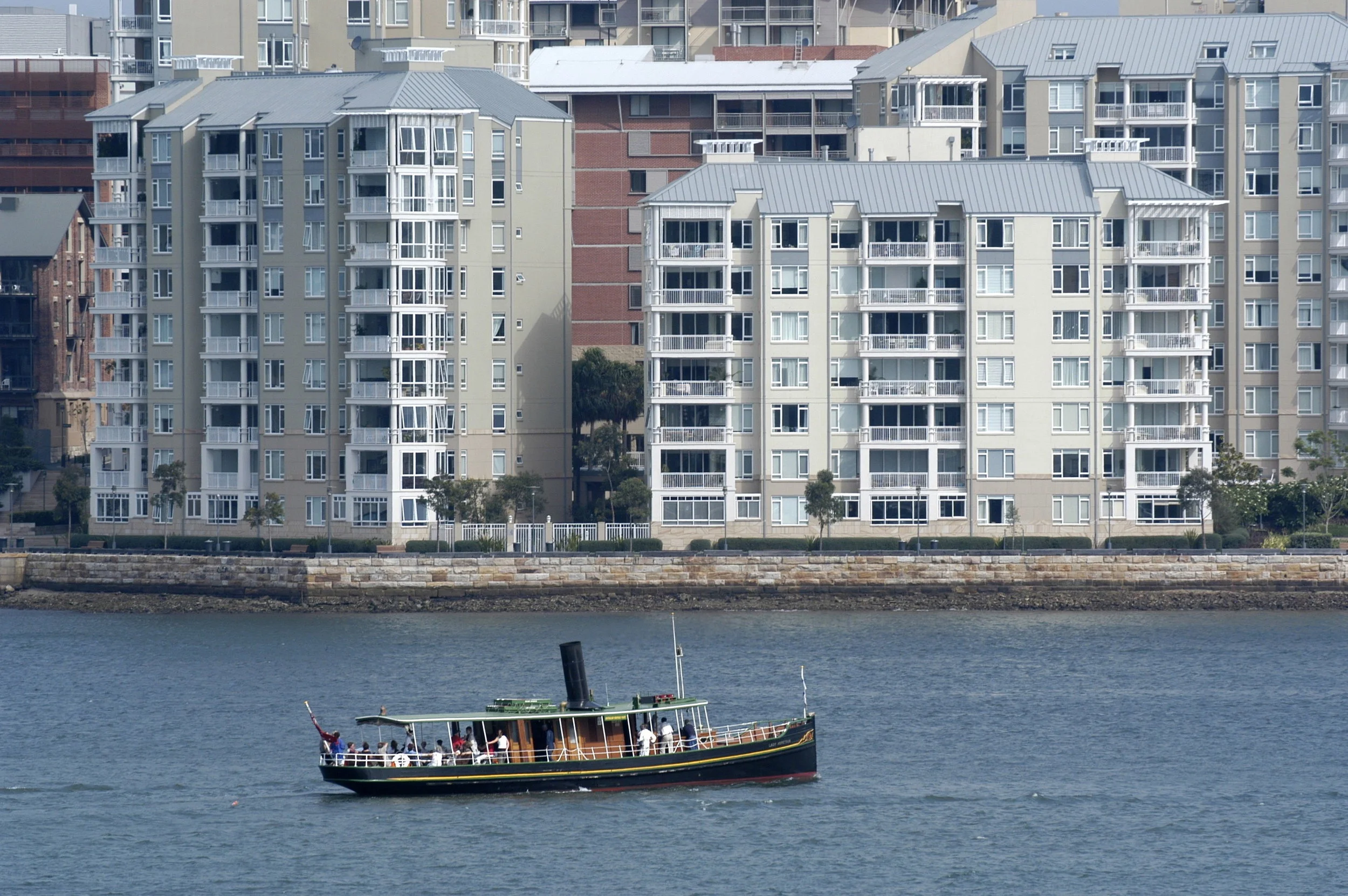Politics > Politics of Urban Renewal, 1940s-2010
Politics of Urban Renewal, 1940s-2010
In 1948, when the state government proposed to declare Ultimo and Pyrmont industrial, the Labor-dominated Sydney Council countered with a proposal to declare most of the peninsula residential. Led by Deputy Lord Mayor Jack Byrne, Labor won a compromise whereby the two suburbs became a patchwork of residential and industrial zones.
Pressure for change was mounted again in the 1980s, as industries closed and people moved out. The quarries were bare. Wool and wheat flowed to Botany Bay, so wool stores fell silent and the trains stopped. CSR decentralised and the workforce followed. The Burley Griffin Incinerator crumbled. Shops and services folded, streets emptied and congregations shrank. Even topless barmaids could not halt the exodus from the Terminus Hotel.
A few brave souls like Michael Matthews bought and renovated cottages. Others – students, homeless or hippies – squatted. New residents campaigned for Better Cities, squatters defended the Age of Aquarius. There was a strong case – and much support – for public housing on publicly owned land. The City failed to build this housing: when the State acquired land, it was promptly sold to developers.
The dominant theory in government circles was ‘Urban Renewal’, to be achieved by reducing government responsibilities and delegating social services to the private sector. Residents responded variously. Some created Interim Park, tried to buy the land, but were outbid. Some squatters simply sought free housing: some cherished utopian ideas. These aims were hard to reconcile with the self-improving aims of new householders – or the anxiety of older residents. Resident Action Groups campaigned for the restitution of run-down services: the short-lived Pyrmont Republic dramatised that perspective.
Developers itched to buy derelict property and build upmarket apartments while Susan and Isaac Wakil bought derelict properties with the long-term aim of realising capital gains.
There was no stopping urban renewal, but developers were occasionally frustrated by strenuous campaigns and complex alliances.
Sources
John Broadbent, Transformations: ecology of Pyrmont peninsula 1788-2008
Michael R. Matthews, Pyrmont and Ultimo, a History
Shirley Fitzgerald and Hilary Golder, Pyrmont and Ultimo Under Siege
Further Reading

